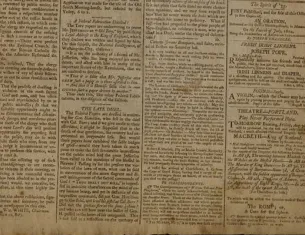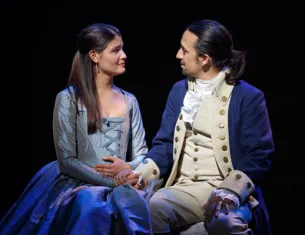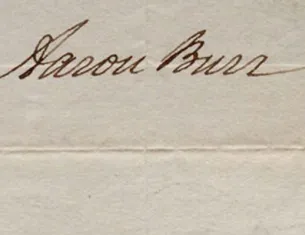Hamilton-Burr Duel, 1804

A 19th-century engraving of the Hamilton-Burr Duel (Granger)
Alexander Hamilton, the former secretary of the treasury, and Aaron Burr, vice president of the United States, had been political rivals for years. In 1791, Burr defeated Philip Schuyler, Hamilton’s father-in-law, in a campaign for the US Senate. In 1800, Burr and Jefferson were tied in the presidential election, and Hamilton threw his support behind Jefferson, although he, too, was a political and personal enemy.
Then, in 1804, when Burr ran for governor of New York, Hamilton’s private statement that Burr should not be trusted was published in newspapers. After an exchange of letters and challenges, Burr and Hamilton met to duel in Weehawken, New Jersey, on July 11, 1804. Burr mortally wounded Hamilton, who died the next day.
In Hamilton, Burr reflects on the outcome of the duel for himself, the survivor, in “The World Was Wide Enough”:
When Alexander aimed
At the sky
He may have been the first one to die
But I’m the one who paid for it
I survived, but I paid for it
Now I’m the villain in your history
I was too young and blind to see . . .
I should’ve known
The world was wide enough for both Hamilton and me . . .



